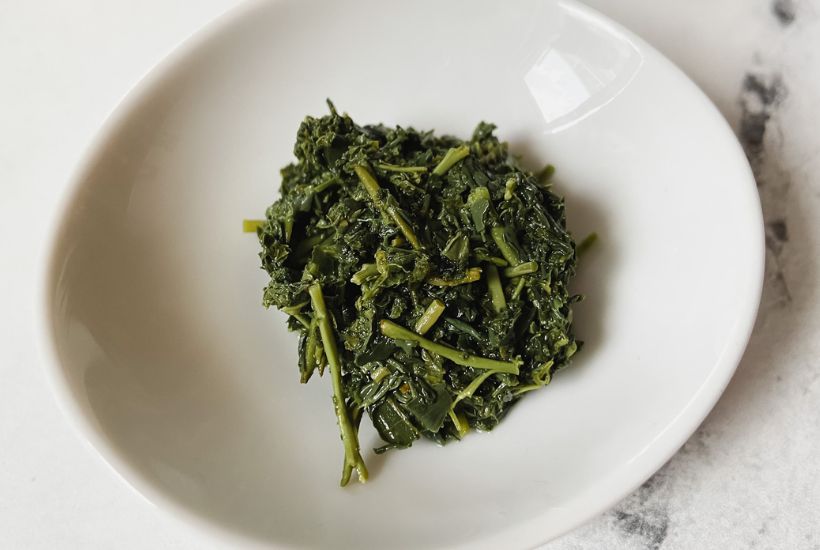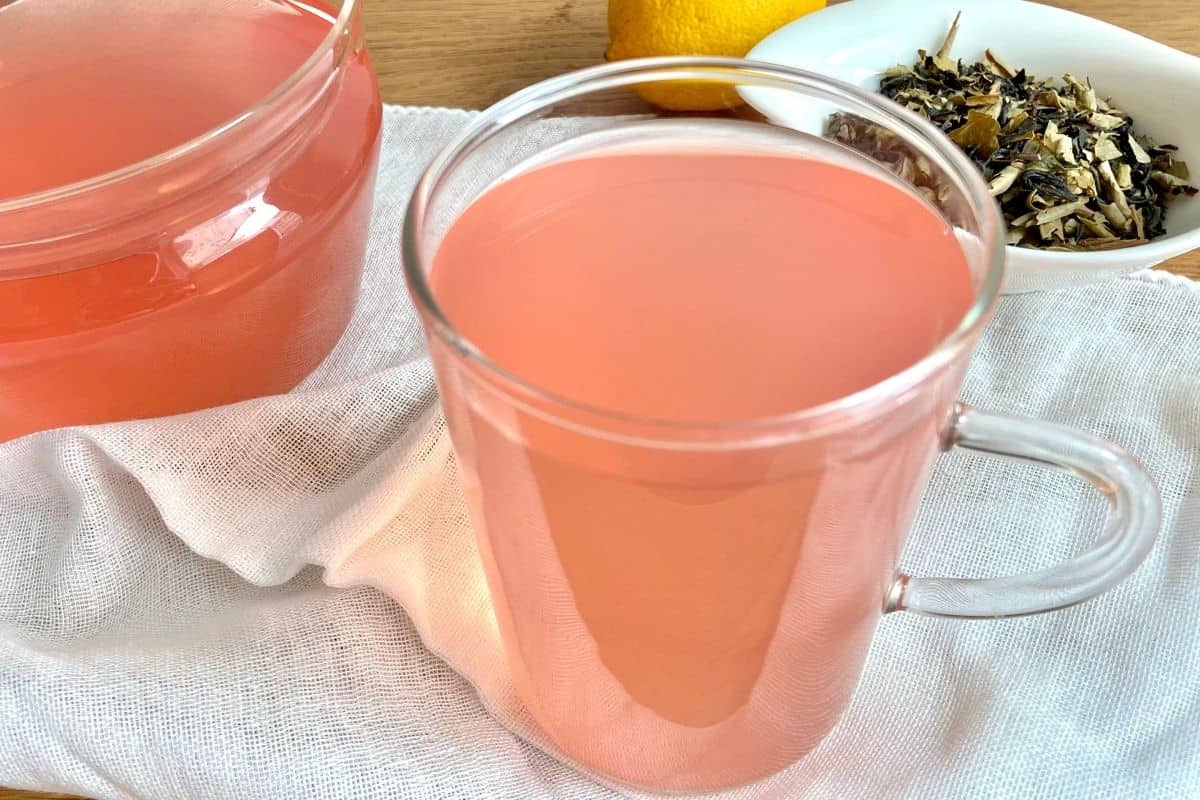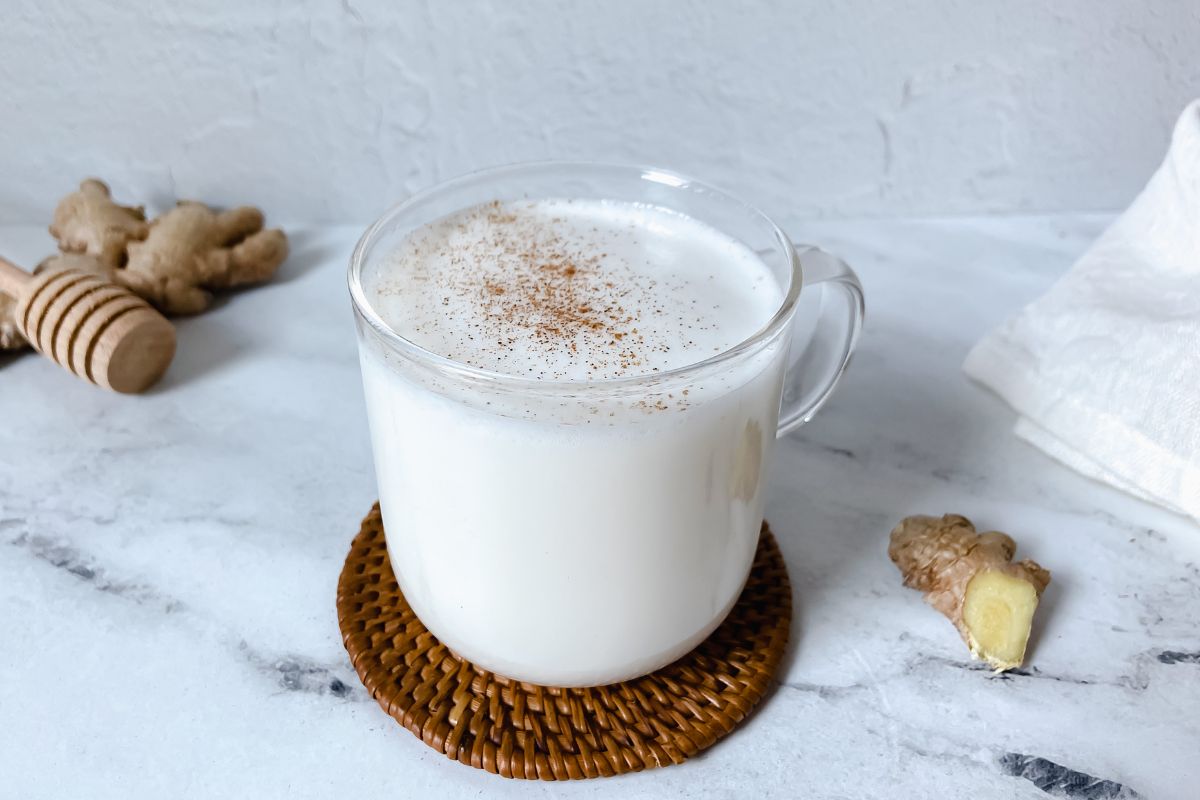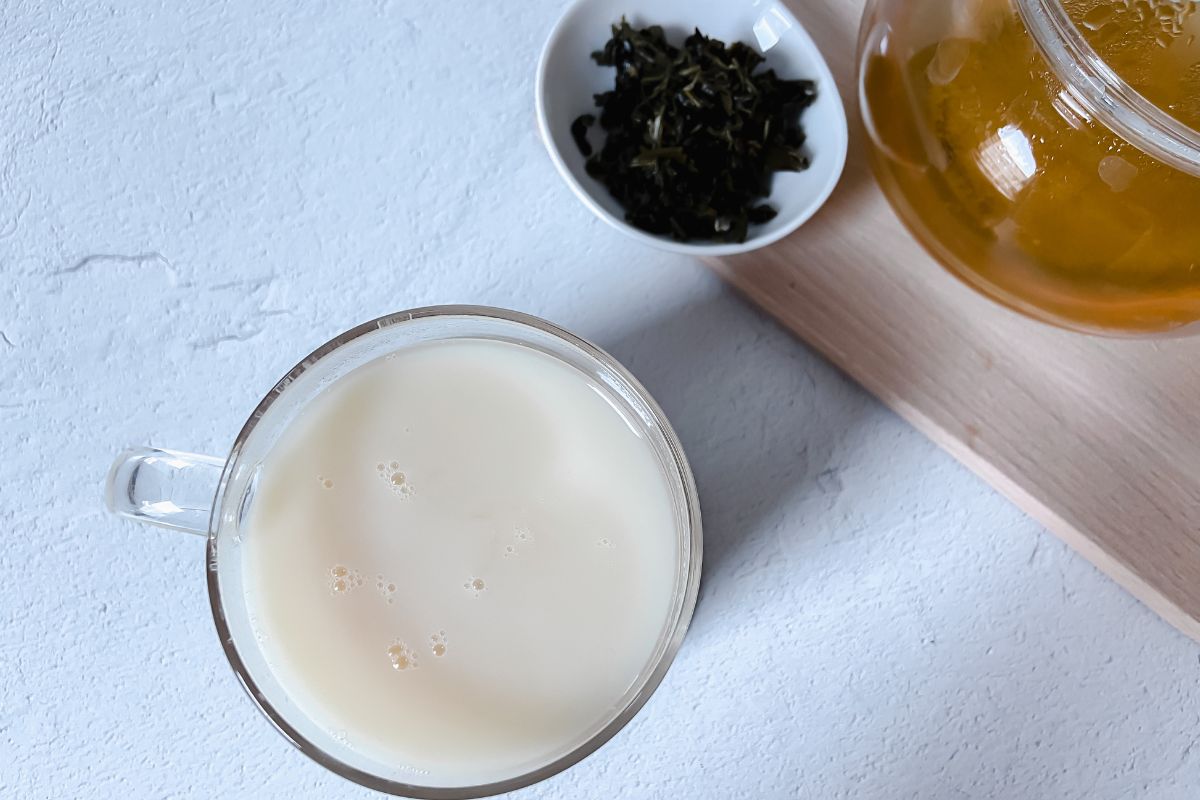Can you eat tea leaves? What you need to know about eating tea
Have you ever wondered what happens if you eat the leaves of tea instead of only making tea from them? Is it good for you? Do they taste good?
Find out how to make the most of tea leaves in the safest way as possible.

You may be surprised to know that tea leaves are actually edible!
In fact, they are a great source of antioxidants and other nutrients.
However, there are also some reasons why you may not want to eat them…
So, in this post I’ve gathered the pros and cons of eating tea leaves.
And in case you decide to try it, some tips on how to choose the best ones for eating and how to prepare them.
Are tea leaves edible?

Yes, tea leaves are safe to eat; the tea plant Camellia sinensis isn’t toxic for humans (nor cats or dogs).
In fact, there is already a very popular type of tea in which you ingest the whole leaf in powdered form (instead of drinking its infusion like in most teas): matcha.
So, you won’t get poisoned by eating tea leaves.
Furthermore, ingesting the right kind of whole tea leaves may provide some beneficial nutrients that you won’t get by just drinking tea.
However, some types of tea types aren’t really that palatable when eaten.
And also, there are some potential concerns (that we will cover later) to consider if you decide to eat tea leaves.
Best types of tea to eat their leaves

The most common tea types to be eaten are high end, good quality green teas.
One of the main reasons for this is that green tea is less processed and contains more antioxidants than regular black tea.
Another point is that they are more tender and have a sweeter taste, so they are more enjoyable to eat.
While eating tea leaves isn’t such a widely spread practice, there are some type of teas that are eaten as they are or used in recipes “relatively” often.
Tea types that are “commonly” eaten are gyokuro, kabusecha, higher grade sencha, matcha and hojicha powder.
As you can see, all these are green teas types!
Bellow I’ve gathered some information about some of these in case you are interested in ingesting them:
Matcha

This might be the most popular tea type where you take the whole leaves, instead of steeping them.
To make matcha, the tea leaves are covered (shaded) for some weeks before harvesting so they develop more chlorophyll.
This gives the tea its unique, vibrant green color.
After the harvest, the young, whole leaves are grounded finely, traditionally stone ground.
The result is an exquisite tea powder considered a superfood, rich in antioxidants and dietary fiber.
There are different quality grades, but the best matcha has a delicate flavor, with a very slight bitterness which is very pleasant and refreshing.
So, it’s quite understandable matcha has become so popular not only to prepare traditional tea with it, but also as an ingredient in recipes like cakes, ice cream or smoothies.
Looking for matcha recipes? Here are some ideas to not only make drinks with it, but also to make different kinds of desserts.
Hojicha

Hojicha is a type of green tea in which the tea leaves are roasted.
The roasting process transforms the tea taste so it gets smoky, very mild and almost with nutty or caramel reminiscences.
Another interesting characteristic of roasted green tea is that the roasting process removes a big part of its caffeine content.
While you may prepare hojicha tea the traditional way (by steeping hojicha tea leaves that you may even easily roast yourself at home), the convenient hojicha powder is also gaining quite a lot of popularity.
And since hojicha powder is made by grounding hojicha tea leaves (in a similar way as matcha is), when you use hojicha powder, you are ingesting whole tea leaves.
RELATED: Can you ground hojicha powder with regular kitchen equipment?
High quality green tea

Apart from matcha and hojicha, there are other green tea types in which the leaves may be eaten.
These teas are usually on the high end, like gyokuro, kabusecha and good quality sencha, which have tender leaves with umami.
Some of these teas are sold in powdered form; others are tea leaves that you may use for steeping and then eat them after that.
It’s quite known that you can steep the same leaves of tea more than once, specially in the case of good quality green teas.
What many people don’t known is that you may eat the leaves after the last steep, when the leaves have got really tender.
A trick to know if they are soft enough is to take some pieces of tea leaves with your fingers; when they are tender, they usually stick to your fingers.
I heard about eating green tea leaves for the first time as I joined a Japanese tea tasting. And after trying it, I can say that it’s really enjoyable!
Check ”Ideas to eat whole tea leaves” for delicious examples on how to use up tea leaves after steeping them.
Tea types you may use as condiments
The next tea types aren’t exactly recommended for eating their leaves, but they are beloved as a condiment:
Black tea
Black tea comes from the same plant than green tea, but since the tea leaves get oxidized, they aren’t as soft as the ones used to make green tea.
So, eating black tea leaves isn’t really pleasant.
However, some sweet recipes use small quantities of dried black tea leaves, like cookies or cakes with small particles of tea.
The tea makes for an interesting and delicious flavor combination.
Earl grey
Earl grey is a type of black tea that gets flavored with bergamot oil.
The citrus fruit gives a lovely fragrance and a somehow fresh flavor to the tea.
Just as black tea, earl grey isn’t meant to be eaten, but in small amounts it works wonderfully flavoring cookies, cakes and other desserts.
Benefits of eating green tea leaves
Remember that while any type of tea leaf is technically edible, it’s recommended to choose high end green tea if you want to eat the leaves.
Eating good quality green tea leaves may provide you with:
- High antioxidant content
The leaves of green tea leaves have the already awesome antioxidants of drinkable green tea but in an even more concentrated form.
- More nutrients that drinking tea
Also, eating the leaves provides some other nutrients that don’t get infused in water when you brew the tea.
Green tea leaves contain both water soluble and fat soluble nutrients.
While the water soluble nutrients go to the water when infusing them, the fat soluble ones (water insoluble) remain in the leaves.
Among the components in green tea that doesn’t dissolve in water are vitamin E, carotenes, chlorophyll, proteins, some minerals and fibers.
- Nice taste
Adding green tea leaves can make for a mild but interesting twist to many dishes.
Green tea leaves that have been already steeped are so mellow that you will barely taste them in combination with other ingredients, yet they’ll add a nice touch and a great color accent.

Cons of eating tea leaves
Eating small amounts of tea leaves won’t harm you, unless you are allergic to it.
Yet, there are still some reasons you should take into consideration if you want to eat tea leaves:
- High caffeine content
Did you know that tea leaves actually have more caffeine that coffee beans?
Steeping tea don’t extract as much caffeine from the leaves, but eating them might surprise you with a bigger caffeine kick.
That’s why you if you’re sensitive to caffeine or just trying to avoid it, eating tea leaves is probably not the best idea.
- Taste (when the tea isn’t the right one)
Most tea leaves aren’t supposed to be eaten so they aren’t really so tasty on their own.
Unless the tea leaves are made from tender leaves, like the ones used for higher end green tea, they might be rather astringent, dry and too fibrous.
- Contaminants
Some teas (specially cheaper ones from tea bags) may contain heavy metals and/or pesticides.
Eating the leaves would expose you to these contaminants in a more concentrated form than drinking it.
- Stomach discomfort
Eating large quantities of tea leaves could lead to constipation and other digestive issues because of their high tannin content.
Conclusion
If you are going to try eating your tea, it’s recommended to choose organic tea to avoid pesticides.
And even more importantly, make sure the tea is grown in soil that gets regularly to ensure it isn’t contaminated with heavy metals like fluoride, lead or arsenic.
Many teas (even some organic brands) are contaminated with a variable amount of heavy metals.
While drinking the tea may not hurt you, eating the leaves will increase your exposure to this contaminants.
Fortunately, high end green teas often get tested for this so you may be able to see their latest reports in good tea online stores.
How to “eat” tea
If you’ve decided you want to eat tea instead of only drinking it, there are 3 ways to do it:
- Use finely ground tea like matcha, hojicha or any other powdered green tea.
Apart from mixing the powder with water to make tea, you may also use it as an ingredient for sweets, drinks or even savory dishes. - Eat the whole leaves after a couple of steeps: eating high quality green tea leaves after 2-4 in small quantities steeps is a not so uncommon practice among tea connoiseurs (more about this practice in the next paragraph)
- Use as a condiment: chop some small amounts of raw tea or use the content of a tea bag to enrich dishes or desserts
Ideas to eat whole tea leaves

Have you ever have such a premium green tea that you wanted to enjoy every bit of it?
The beauty of good tea is, you may re-steep it, so you get multiple cups of tea from the same leaves.
And, as we’ve seen, you may even eat the leaves of tea (usually green tea) after a couple of brews, so there is no waste!
Here are some ideas on what to do with tea leaves after steeping them:
- Add them to any dish that you feel calls for it, like adding them to salads, stew…
- Make a tea leaf pesto: blend the leaves with some olive oil, garlic, Parmesan cheese and pine nuts. You may use it as a regular pesto, adding it to pasta dishes or as a dip.
- Fried tea leaves: this savory dish is a popular way to eat green tea or oolong tea leaves in China and other Asian countries.
- Blend them into a smoothie
- Use them as topping, like over rice dishes or over sweet desserts
- Marinate them in some soy sauce and sesame oil. Cover it and keep it in the fridge. It will be good for a couple of days.
- Make a tea leaf omelet: whisk some eggs, add the tea leaves and fry like a regular omelet.
- Add them to soup: they will give it a nice flavor and texture
FAQs around eating tea leaves
Even if you choose good quality tea leaves that are free of contaminants and pesticides, it’s commonly recommended not to eat more than 5 gr. tea leaves per day, primarily due to their caffeine content.
While eating hojicha is perfectly safe, I personally didn’t find it so enjoyable to eat hojicha tea leaves after steeping them.
Usually, hojicha is made from lower grade tea, so it might have some twigs, which can be a bit hard to chew.
If you want to “eat” hojicha, I recommend using hojicha powder (even home blended one) instead of eating its leaves.
No, those products are made from industrial processings that unfortunately remove the antioxidants of the tea.
To sum it up
Tea leaves are safe to eat.
In fact, they are a source of antioxidants and other nutrients.
However, most tea types aren’t so enjoyable as they are.
The best type of tea to eat its leaves is green tea.
Choose a high quality one (like gyokuro) that is regularly tested to avoid contaminants. Also, be aware that tea leaves will likely contain a significant amount of caffeine.
A convenient way to eat green tea leaves is by using them after a couple of steeps as an ingredient or topping for dishes.
You may also use tea in already powdered form, like matcha, hojicha powder or powdered green tea (powdered Sencha).
There are also recipes that call for chopped, small amount of black tea as a condiment.
Have you tried eating tea? If you have a favorite recipe to eat tea leaves, please share it in the comments!







Very interesting article!
I remember that my mother (a traditional Japanese lady) considered green tea powder very healthy because it allowed to intake all of the good nutrients of tea.
I once got served matcha powder to add it to tempura (just as if it were salt) in a fancy restaurant in Tokyo.
Good to know there are so many ways to enjoy good quality tea.
Thank you for sharing such an interesting story!